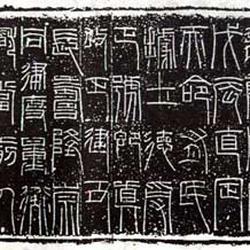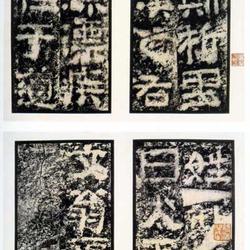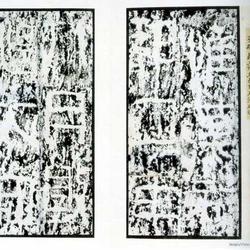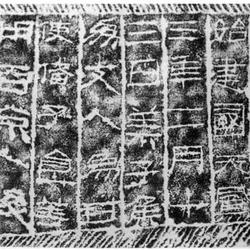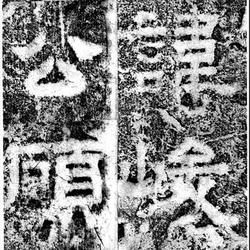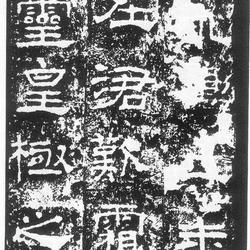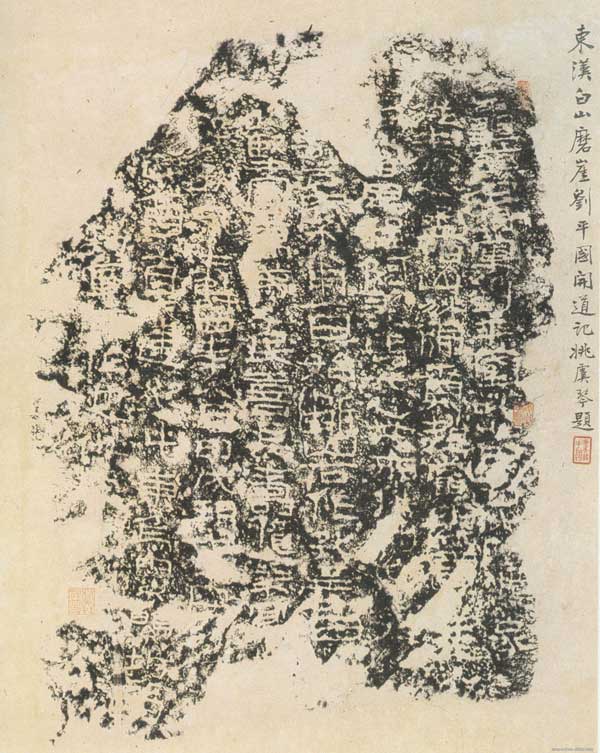
The current full name is "Qiuci Left General Liu Pingguo Cliff", also known as "Liu Ping Guo Zhi Road Ode", "Liu Ping Guo Zhi Guan Pavilion Ode", "Qiuci Stone Carving", etc. 8 lines, 105 words. It is located between a giant rock wall at the mouth of Bozalagegou, Heiyingshan Township, 150 kilometers northeast of Baicheng County, Xinjiang. Engraved in August of the fourth year of Yongshou in the Han Dynasty (the third year of Yongshoufan, the Yuan Dynasty was changed to "Yanxi" in June of the following year), the official script of Moya records that General Liu Pingguo, the left general of Qiuci, the Protectorate of the Western Regions, brought 6 Qin people (Han people) and Qiang people. After the pass was built and the road was built, a text was carved on the stone wall next to it, describing the deeds of digging rocks to build pavilions and building the pass. It is an important historical material for studying Xinjiang.
This stone carving was first discovered in the fifth year of the reign of Emperor Guangxu of the Qing Dynasty, that is, in the summer of 1879 AD. Zhang Yao, a famous official in river governance in the Qing Dynasty and the admiral of the Guangdong land route who assisted in Xinjiang military affairs, sent a sergeant to explore a shortcut across the Tianshan Mountains. When traveling to the chaotic mountains of Sailimu, a sergeant lost his way and accidentally discovered chiseled marks on the rock wall, which seemed to have writings vertically and horizontally. After returning to the team, he told his colleagues. After hearing about it, Shi Buhua, Zhang Yao's staff at that time, came to investigate on horseback and brought grain and fodder. He learned that this was a cliff from the Later Han Dynasty, and immediately made a rubbing to pass it down to future generations.
Since then, literati and poets have continued to visit the ancient times and made many rubbings, which caused a sensation in the capital. Because it is an authentic official script of the Han Dynasty, it has dual value of historical materials and calligraphy, and is rare. Therefore, military officers, local officials and businessmen rushed to come and make rubbings. In 1928, my country's famous archaeologist Huang Wenbi came here to check it out. Unfortunately, when he arrived, the writing on it had been blurred. In 1957, Xinjiang cultural relics and archaeologists identified it as one of the first batch of provincial key cultural relics protection units.
In late July 2002, a once-in-a-century flood hit Baicheng County, and the Liupingguo cliff site was not spared either. The debris carried by the flood caused irreparable losses to this very precious cliff site. At present, it is difficult to identify all the inscriptions on this cliff site. Later, the cultural relics management department of Baicheng County formulated a maintenance plan for the cliff stone carving site of Kucha Zuo General Liu Pingguo to strengthen protection.
At this time, the peeling is serious and the text is full of water. The size of his books varies, and most of them are written in round pens. They are casual but full of ancient style. Compared with the engravings of "Xi Niao" and "Shimen", they are more broad and sparse.

